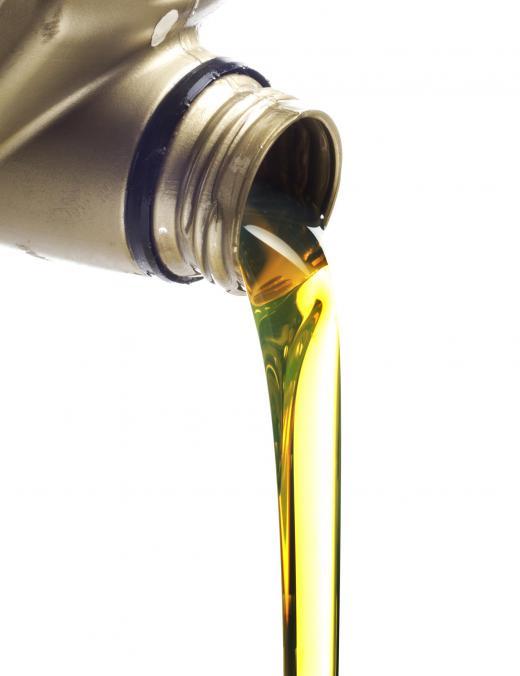What Is the Pour Point?
 Mary McMahon
Mary McMahon
Pour point is the temperature above which a lubricant or fluid will move freely under normal conditions. This can be an important characteristic to determine in materials testing. For some kinds of materials, standardized tests are available to allow manufacturers to consistently determine and report their pour points, and the material may need to adhere to set specifications before it can be sold. Some products come in a range of formulations, in which case the labeling can provide information about performance in various conditions, including the pour point.
Oil and gas companies pay close attention to pour point because it has an impact on drilling and transport. If a petroleum deposit has a high pour point, usually reflecting a high paraffin content, it may be difficult to extract. Drilling teams need the oil to flow so they can pull it up with drilling rigs. Transport can also become a problem; in some cases, oil pipelines need to be heated to keep the oil at pour point and ensure it moves smoothly from oil fields to shipping terminals and other destinations.

Manufacturers of lubricants also have concerns in this area. For products like motor oil, the lubricant may need to operate at a range of temperatures. Technicians don’t want oil that flows too readily at low temperatures because it might thin too much at high temperatures and cause problems with the engine. They also need to consider issues like handling engines in extreme cold, where it is sometimes necessary to heat lubricants or entire engine blocks to keep the equipment operational.
To test the pour point of a material, one simple option is to fill a sample container and place it in a cool environment. As the temperature is lowered, a technician can periodically tilt the container to see if the material moves. When tipping the container on its side results in no movement for five minutes, it is apparent that the material has dropped just below the pour point. The testing team can add several degrees to this temperature to determine the operating temperature disclosures for labeling and regulatory purposes; one standard has testers add three degrees Celsius to obtain this measurement.
When materials need to meet specific pour point standards, their labels may need to provide information about the testing and the confirmed operating range. Regulators can request samples of the material to test independently, confirming that a company is meeting specifications. Other materials may not need to meet specific requirements, but still disclose this information because it can be useful for customers.
AS FEATURED ON:
AS FEATURED ON:











Discuss this Article
Post your comments